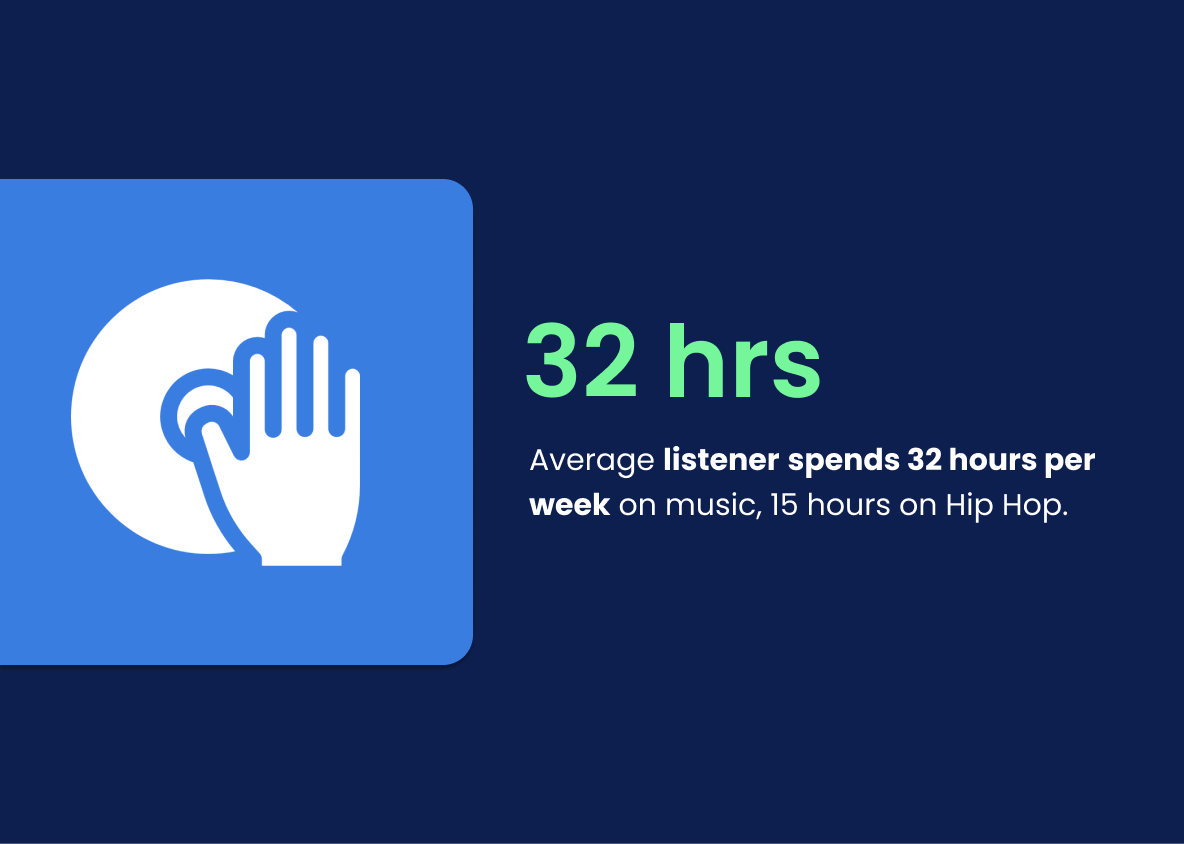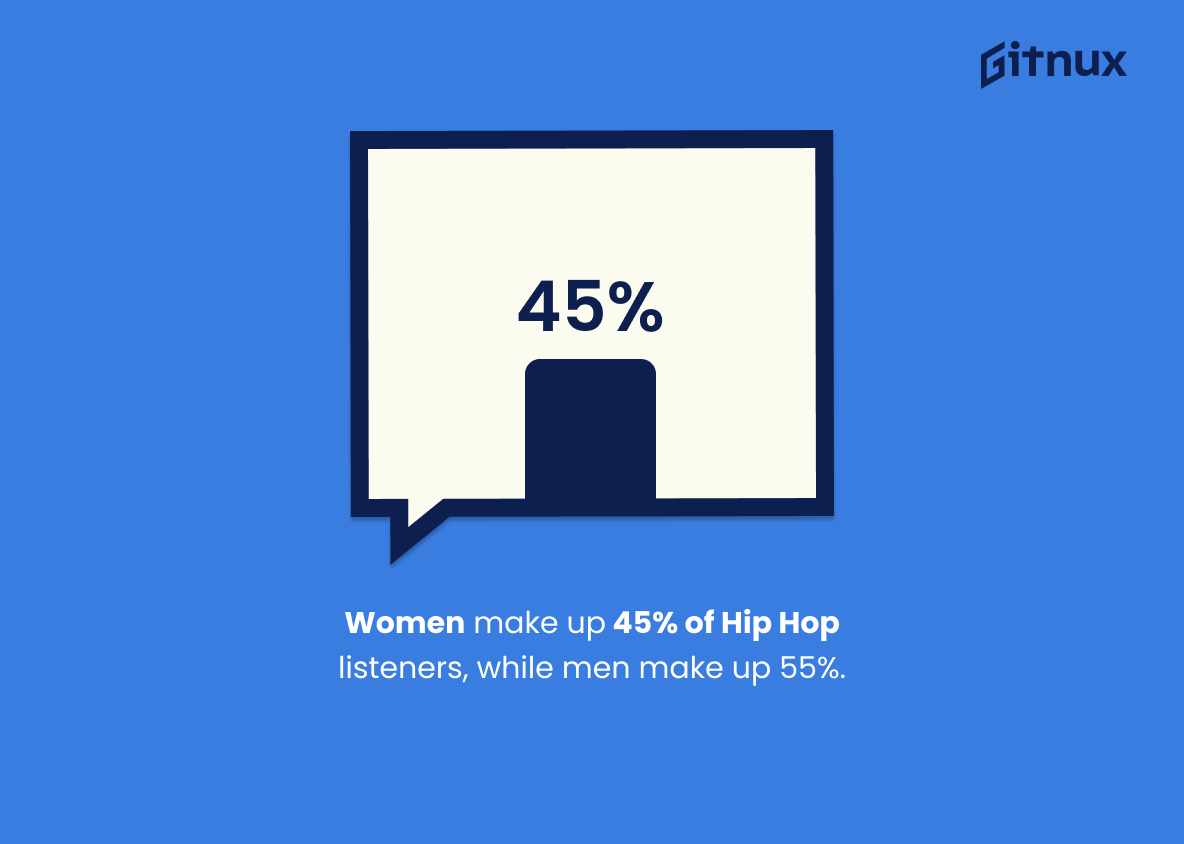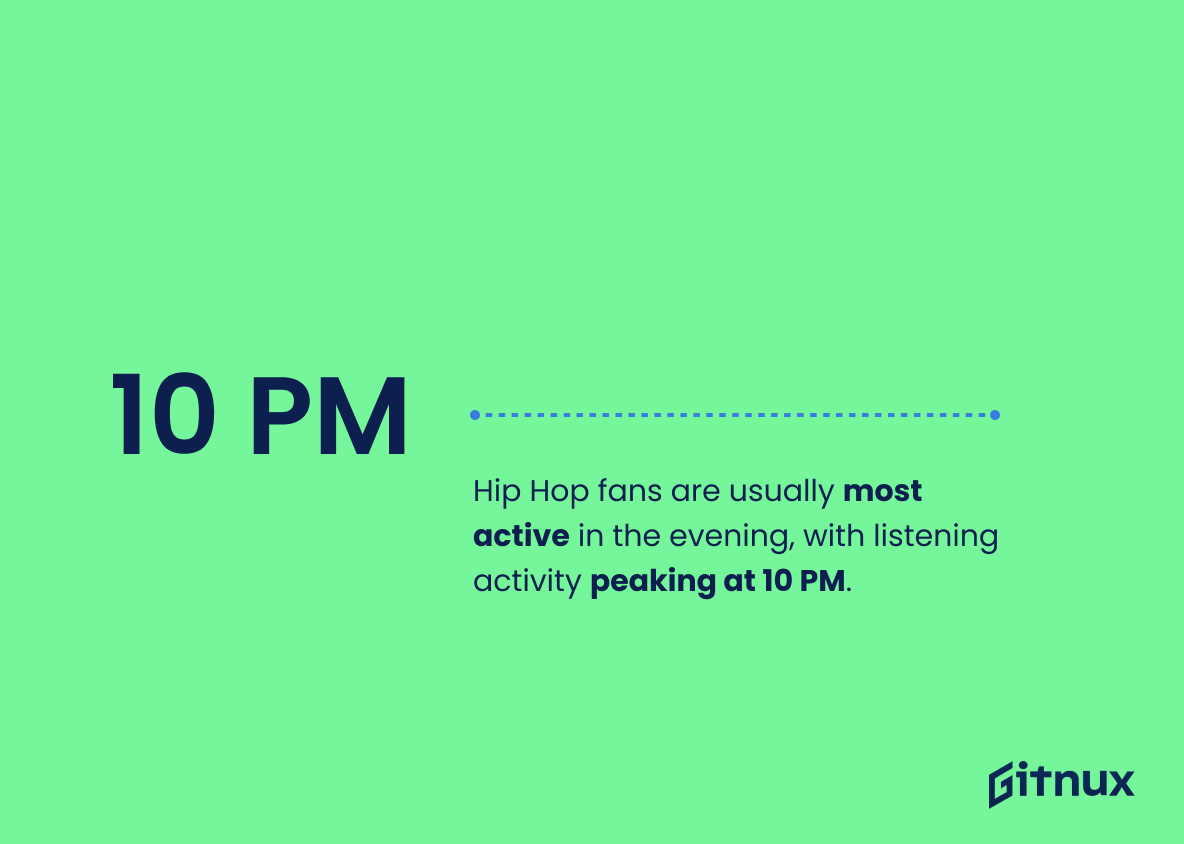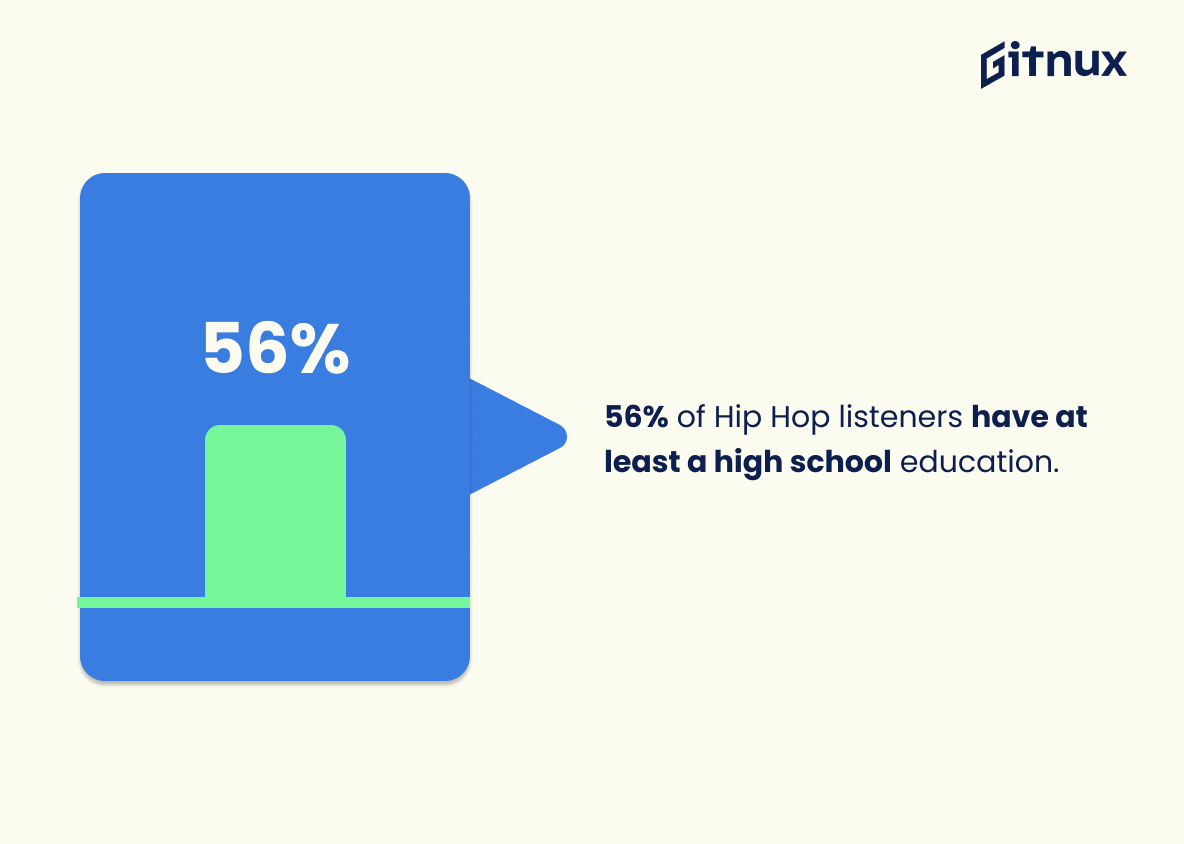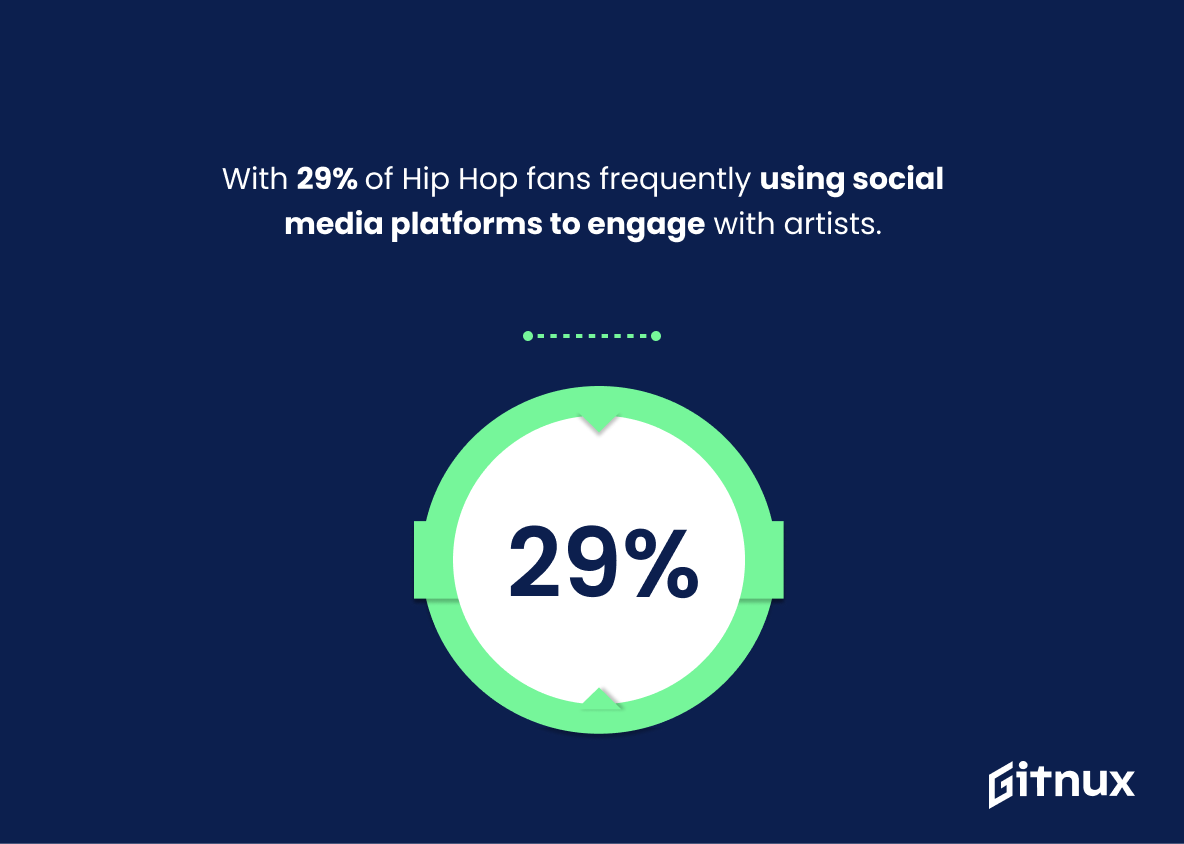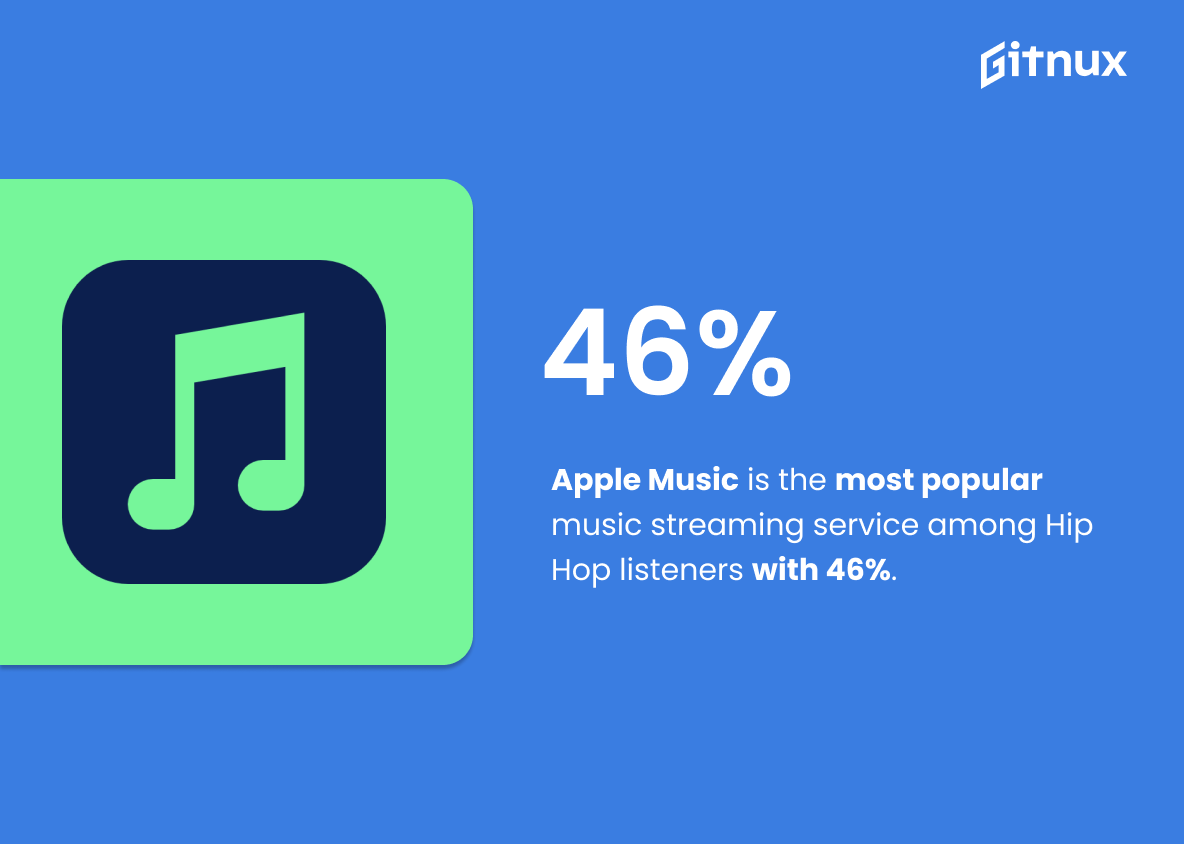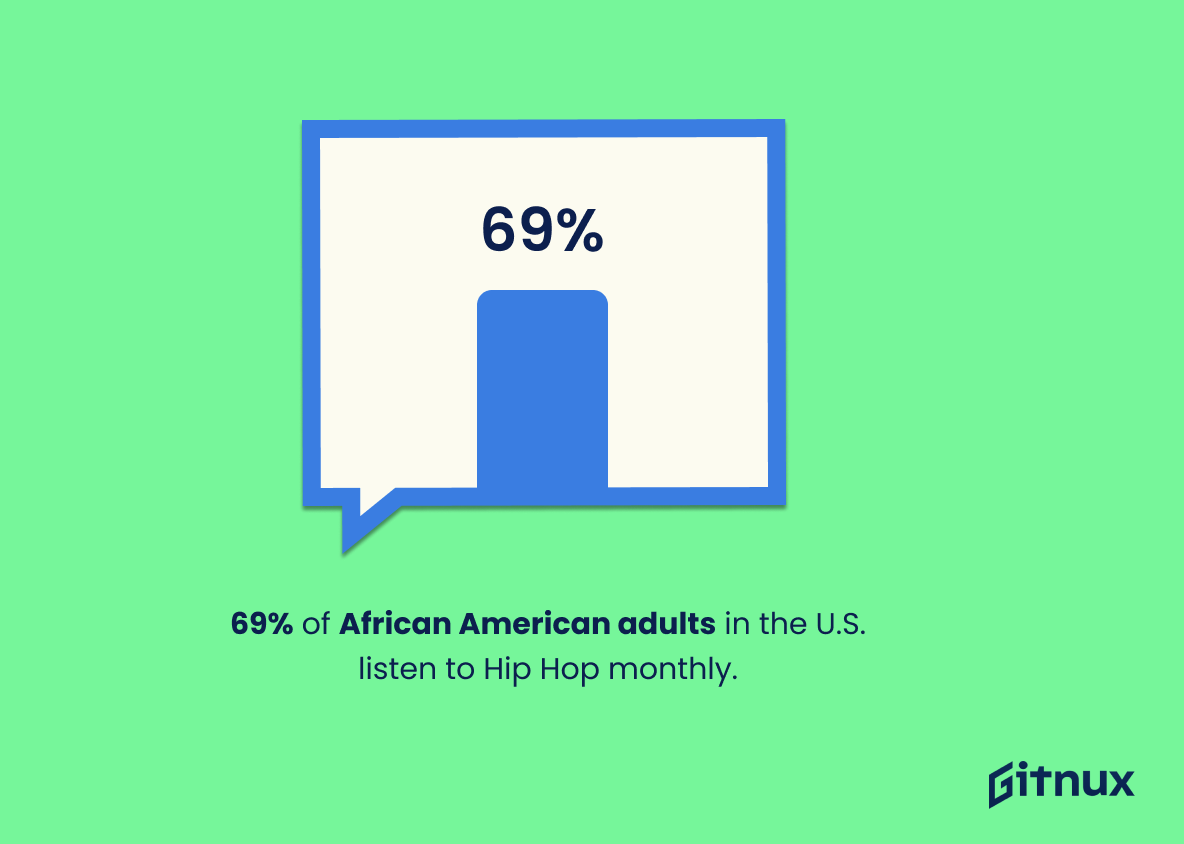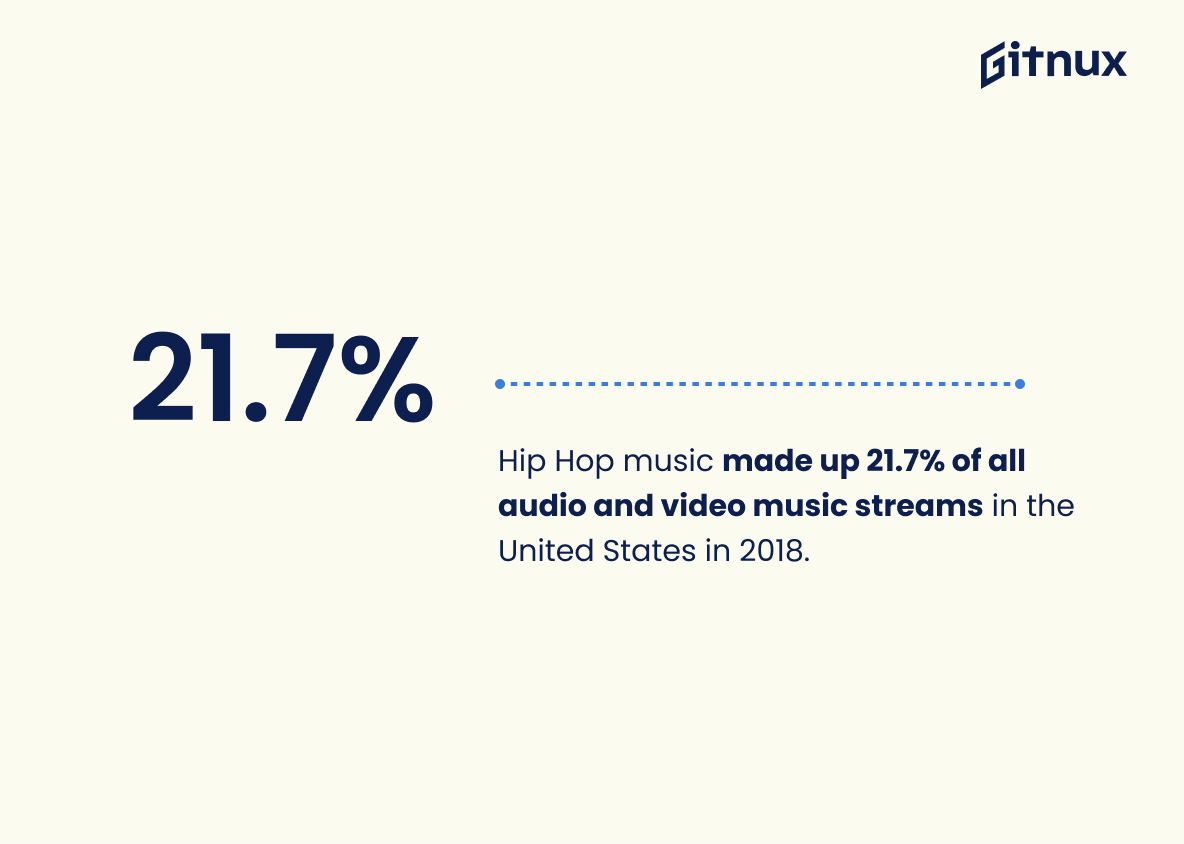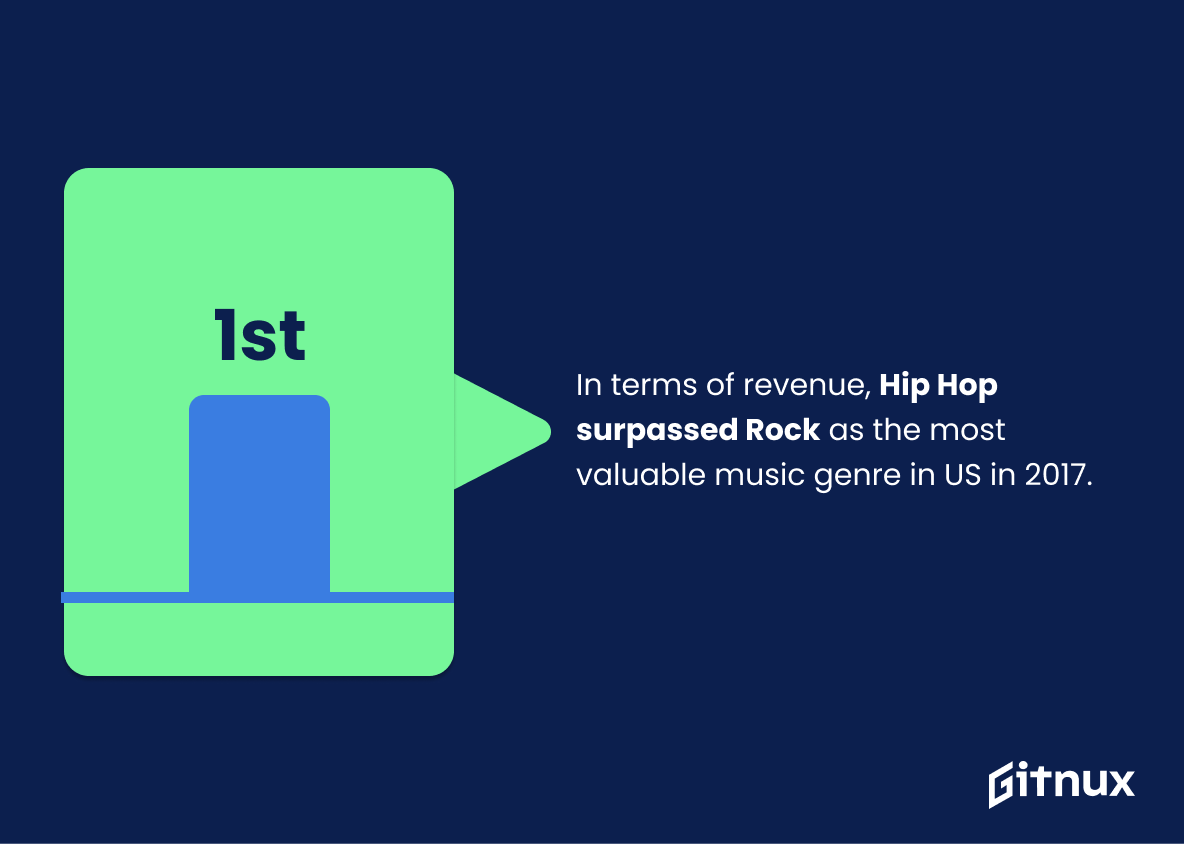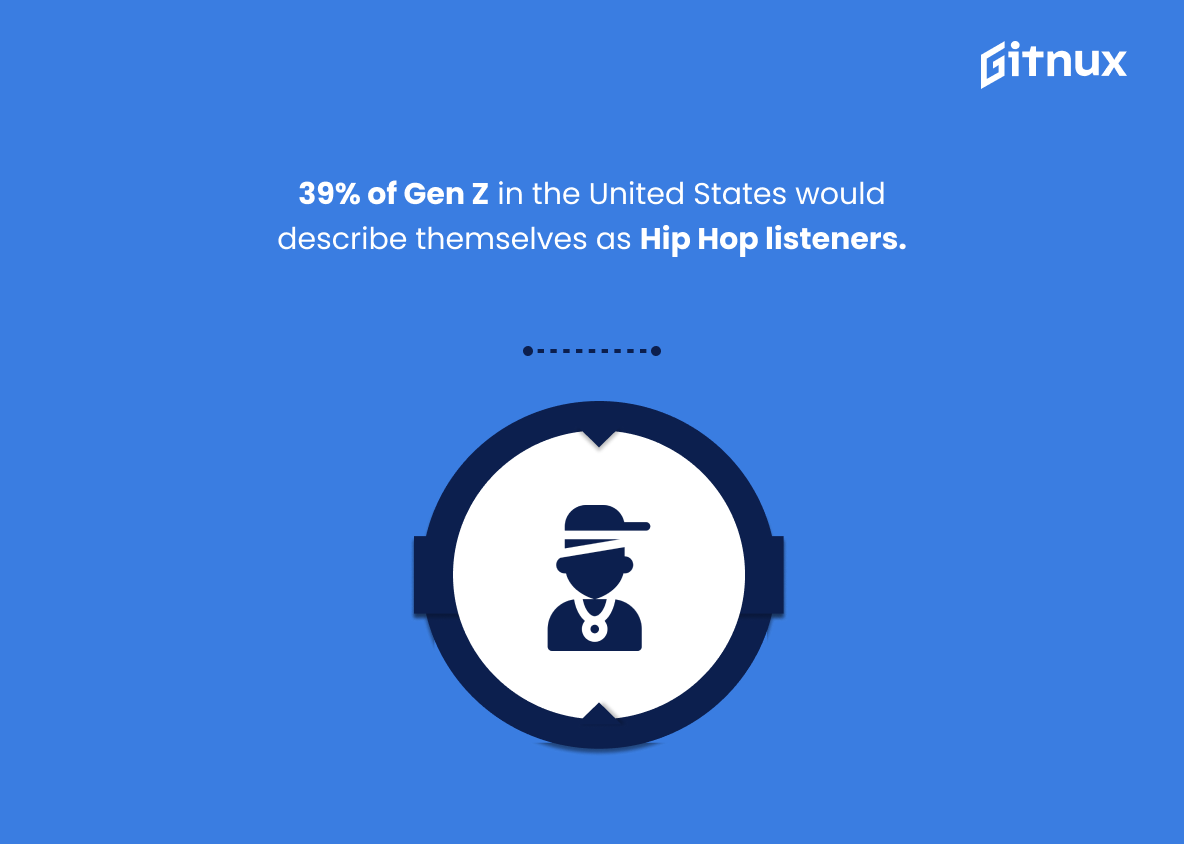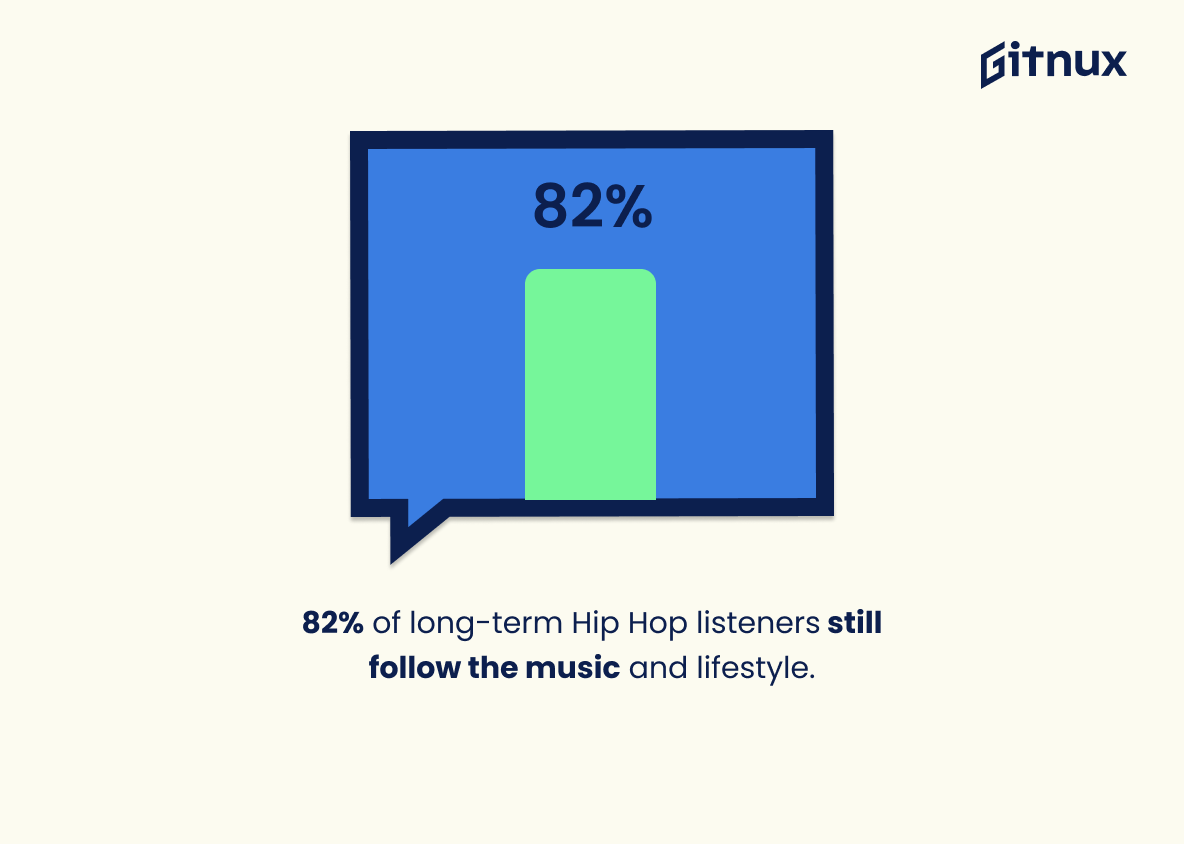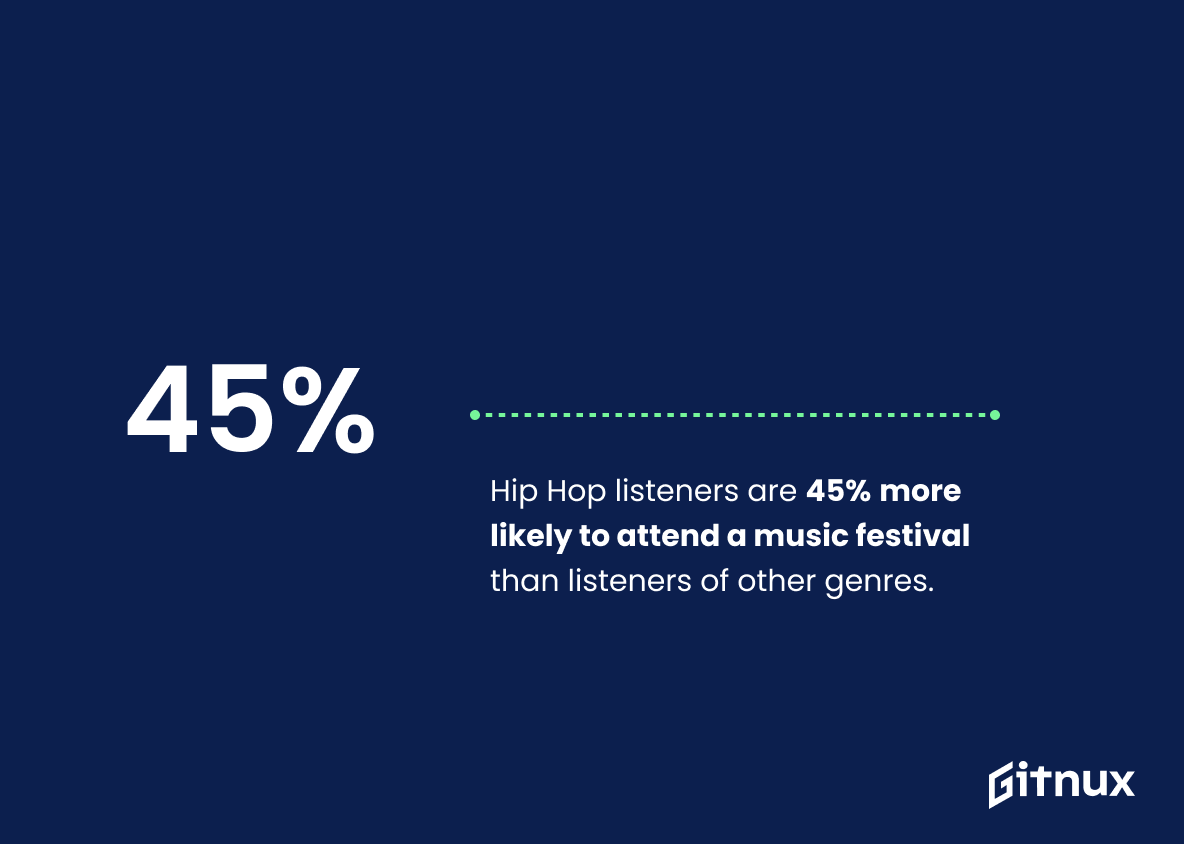Hip Hop is a genre of music that has been around for decades and continues to be popular among young adults in the United States. According to Statista, 50% of Millennials choose hip-hop as their favorite music genre, followed by pop (30%) and rock music (20%). In 2020, Hip Hop/R&B genres made up 28% of total album consumption in the US. The average listener devotes about 32 hours per week listening to all types of music with 15 hours spent on Hip Hop alone. Women make up 45%, while men make up 55%, when it comes to listenership for this particular genre.
When looking at other statistics related to Hip Hop listeners such as peak times they are most active or what streaming services they prefer, interesting trends can be seen across different demographics including age groups and gender preferences. For example, 56% have at least a high school education; 69% African American adults listen monthly; 39 % Gen Z would describe themselves as fans; 29 % more likely engage with video content than other genres’ followers; 14 % more likely buy items based on brand name recognition than others who don’t follow this type of musical style etc.. Furthermore, according to research conducted by DMN3 Music & Entertainment Marketing Agency , those who prefer hip hop are 34 percent more likely “active and creative” lifestyle compared with people who like other kinds of tunes .
This blog post will explore these various statistics regarding U.S.-based Hip Hop Listeners Statistics from sources such as Statista , Nielsen , Rolling Stone Magazine , Musicbed Community Forum etc., providing an overview into how much influence this specific musical style has had over its audience throughout time – both now and in years past.
This statistic is a powerful indicator of the influence of Hip Hop on the music preferences of young U.S. adults. It shows that Hip Hop is the most popular genre among Millennials, with half of them choosing it as their favorite. This statistic is important for a blog post about Hip Hop Listeners Statistics, as it provides a clear picture of the current state of the genre and its popularity among young adults.
In 2020, Hip Hop/R&B genres made up 28% of total music album consumption in the United States.
This statistic is a powerful indicator of the immense popularity of Hip Hop/R&B genres in the United States. It shows that the genre has become a major force in the music industry, with a significant portion of album consumption coming from these genres. This data can be used to inform blog posts about Hip Hop Listeners Statistics, as it provides a clear picture of the genre’s reach and influence.
Hip Hop Listeners Statistics Overview
The average listener devotes about 32 hours per week to listening to music. Of this, around 15 hours per week are spent listening to Hip Hop.
This statistic is a powerful indicator of the popularity of Hip Hop music among listeners. It shows that Hip Hop is a major part of the average listener’s music consumption, accounting for nearly half of their weekly listening time. This statistic is important to consider when discussing the impact of Hip Hop on the music industry and its listeners.
Women make up 45% of Hip Hop listeners, while men make up 55%.
This statistic is significant in the context of Hip Hop Listeners Statistics because it reveals the gender breakdown of the genre’s audience. It shows that Hip Hop is not just a male-dominated genre, but that it has a sizable female fanbase as well. This is important to note, as it demonstrates the genre’s broad appeal and its ability to reach a wide range of listeners.
Hip Hop fans are usually most active in the evening, with listening activity peaking at 10 PM.
This statistic is a crucial insight into the behavior of Hip Hop fans, demonstrating that they are most engaged with the genre in the evening. This information can be used to inform decisions about when to post content related to Hip Hop, when to host events, and when to advertise to Hip Hop fans. Knowing when Hip Hop fans are most active can help maximize the reach of any blog post about Hip Hop Listeners Statistics.
56% of Hip Hop listeners have at least a high school education.
This statistic is significant in the context of a blog post about Hip Hop Listeners Statistics because it demonstrates that the majority of Hip Hop listeners have a high school education, indicating that the genre is not only popular among those with lower educational attainment. This statistic serves to challenge the stereotype that Hip Hop is only popular among those with lower educational attainment, and instead suggests that the genre is enjoyed by a wide range of people.
With 29% of Hip Hop fans frequently using social media platforms to engage with artists, this genre has the highest percentage of social media engagement from its listeners.
This statistic is a testament to the power of Hip Hop’s influence on social media. It shows that Hip Hop fans are not only passionate about the music, but also actively engaging with the artists and their content. This level of engagement is invaluable for artists, as it helps to build a strong connection with their fans and create a loyal following. Furthermore, it demonstrates the potential of Hip Hop to reach a wide audience and create meaningful conversations.
Apple Music is the most popular music streaming service among Hip Hop listeners with 46%; Spotify is a close second at 44%.
This statistic is a crucial piece of information for any blog post about Hip Hop Listeners Statistics, as it provides insight into the preferences of Hip Hop listeners when it comes to music streaming services. It reveals that Apple Music is the most popular choice among Hip Hop listeners, with Spotify coming in a close second. This data can be used to inform decisions about which streaming services to focus on when marketing to Hip Hop listeners.
69% of African American adults in the U.S. listen to Hip Hop on a monthly basis.
This statistic is significant in the context of a blog post about Hip Hop Listeners Statistics because it demonstrates the widespread popularity of the genre among African American adults in the U.S. It highlights the fact that Hip Hop is not only a popular genre among young people, but also among adults, and that it has become an integral part of African American culture.
Hip Hop music made up 21.7% of all audio and video music streams in the United States in 2018.
This statistic is a testament to the immense popularity of Hip Hop music in the United States. It shows that Hip Hop is one of the most listened to genres of music in the country, and that it has a large and dedicated fan base. This statistic is important to consider when discussing Hip Hop Listeners Statistics, as it provides a clear indication of the genre’s reach and influence.
In terms of revenue, Hip Hop surpassed Rock as the most valuable music genre in the United States in 2017.
This statistic is a testament to the power of Hip Hop as a genre, demonstrating its immense popularity and financial success in the United States. It is a key indicator of the genre’s influence and impact on the music industry, and provides an interesting insight into the preferences of music listeners in the US. As such, it is an important piece of information to consider when discussing Hip Hop Listeners Statistics.
39% of Gen Z in the United States would describe themselves as Hip Hop listeners.
This statistic is a powerful indicator of the influence of Hip Hop on the Gen Z population in the United States. It shows that a significant portion of this demographic is engaging with the genre, and that Hip Hop is a major part of their lives. This statistic is essential for any blog post about Hip Hop Listeners Statistics, as it provides a clear picture of the current state of the genre’s popularity.
Hip Hop/R&B listeners are more than three times as likely to share content on social media than those who prefer other genres.
This statistic is a powerful indicator of the influence of Hip Hop/R&B listeners on social media. It shows that these listeners are more engaged with content than those who prefer other genres, and are more likely to share it with their networks. This could be a great opportunity for marketers to reach a larger audience by targeting Hip Hop/R&B listeners. Additionally, it could be used to demonstrate the impact of Hip Hop/R&B music on social media, and how it can be used to spread messages and ideas.
Among those who have been Hip Hop listeners for over 10 years, 82% still actively follow the music and lifestyle.
This statistic is a testament to the enduring power of Hip Hop music and lifestyle. It shows that even after a decade of listening, the majority of fans remain dedicated to the genre and its culture. This is a powerful indicator of the strength of Hip Hop’s influence and its ability to captivate and engage its listeners.
Hip Hop listeners are 45% more likely to attend a music festival than listeners of other genres.
This statistic is a powerful indicator of the influence of Hip Hop music on its listeners. It shows that Hip Hop fans are passionate about their music and are willing to go the extra mile to experience it live. This statistic is important to consider when discussing the impact of Hip Hop music on its fans, as it demonstrates the dedication and enthusiasm of its listeners.
Conclusion
Based on the statistics presented, it is clear that Hip Hop has become a major force in music consumption and engagement. It is the favorite genre among young adults, with Millennials choosing hip-hop as their top choice for listening pleasure. In 2020, Hip Hop/R&B genres made up 28% of total music album consumption in the United States and listeners devote an average of 15 hours per week to this genre alone. Women make up 45% of its audience while men account for 55%. Furthermore, 56% have at least a high school education and are more likely than other music listeners to buy items based on brand loyalty or engage with video content online.
Apple Music and Spotify are popular streaming services amongst these fans who also tend to be active social media users when engaging with artists they follow. Finally, African American adults listen monthly while Hispanic Americans do so daily; Gen Zers identify themselves as followers; those who have been fans over 10 years still actively follow it; festival goers prefer this type of music; YouTube views were highest across all genres last year; fitness enthusiasts lean towards it too – making Hip Hop one powerful musical movement.
References
0. – https://www.statista.com
1. – https://www.eventbrite.com.au
2. – https://www.edition.cnn.com
3. – https://www.nielsen.com
4. – https://www.musicbed.com
5. – https://www.pewresearch.org
6. – https://www.rollingstone.com
7. – https://www.mediavillage.com
8. – https://www.musonomics.org
9. – https://www.dash.harvard.edu
10. – https://www.lab42.com
11. – https://www.musicbusinessworldwide.com
12. – https://www.ifpi.org
13. – https://www.emarketer.com
